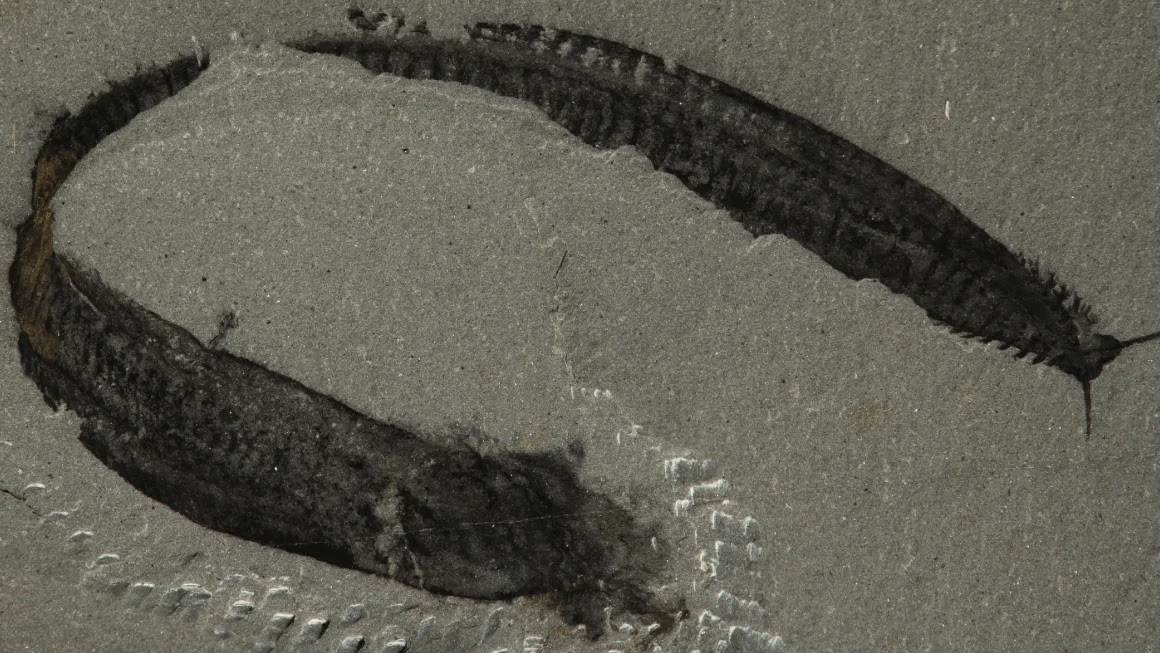A Pikaia gracilens fossil (head, right) from the Smithsonian National Museum of Natural History is seen right side up. The extinct sea creature was one of the first animals to have a precursor of a backbone.
There were a number of reasons for revisiting earlier interpretations of the fossils, Giovanni Mussini said.
Annotated photos above show the newly revised organization of Pikaia gracilens. Abbreviations in box C indicate key features in the fossil seen in box B: tentacles on Pikaia's head (Tc); innervation (In); dorsal nerve cord (Nc); possible gonads (?Go); and myosepta, or connective fascia (Ms). The drawing in box G identifies features in the fossil in box F: front appendages (Aa); the cavity of the pharynx (Ph); gut canal (Gu); and myomeres, or muscle segments (My). Fossil specimens are from the Smithsonian National Museum of Natural History except for the fossil in box I from the Royal Ontario Museum.
Paleontologist Charles Doolittle Wolcott first encountered fossils of Pikaia in the Burgess Shale deposits of British Columbia, dating to 508 million years ago, and described them in a 1911 treatise. The animal measured roughly 6.3 inches (16 centimeters) long and had a flattened, sinuous body and a tiny head, tipped with two tentacles and fringed with external gills. These were originally thought to be rudimentary legs, so the animal was positioned with these structures facing downward.
We may need to revisited all of our older fossils again! -jzebraa
Read More Story Source













